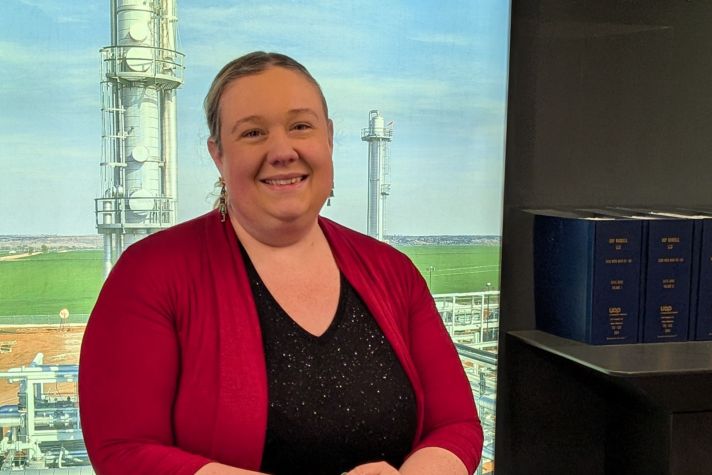-
Global
-
Africa
-
Asia Pacific
-
Europe
-
Latin America
-
Middle East
-
North America
- |
- BUSINESSES
- |
- Contact
- |
-
Global
-
Africa
-
Asia Pacific
-
Europe
-
Latin America
-
Middle East
-
North America
- |
- BUSINESSES
- |
- Contact
- |
You are browsing the product catalog for
You are viewing the overview and resources for
- News
- How We Are Teaming Up with AstraZeneca to Reduce the Environmental Impact of Respiratory Care
How We Are Teaming Up with AstraZeneca to Reduce the Environmental Impact of Respiratory Care
Solstice® propellent technology will be used in next-generation inhalers for patients with chronic respiratory diseases
Innovation is critical to the future of healthcare and the environment.
As a science-led biopharmaceutical company, AstraZeneca is focused on delivering its ambition to reach zero carbon emissions from its global operations by the end of 2025 and be carbon negative across its value chain by 2030.
One way AstraZeneca plans to reach those goals is by teaming up with Honeywell to implement the near-zero global warming potential (GWP) Solstice® Air propellant in respiratory inhalers.
Here’s what to know about the collaboration.
Inhalers are a common treatment for patients with asthma and COPD worldwide.
Approximately 339 million children and adults worldwide suffer from asthma, and 384 million patients suffer from chronic obstructive pulmonary disease (COPD) around the world, according to the Global Asthma Network and the World Health Organization.
A large percentage of people with asthma and COPD are prescribed medicine in a type of respiratory inhalers known as a pressurized metered-dose inhaler (pMDI), according to the World Health Organization.
Solstice® Air reduces greenhouse gas emissions by up to 99.9% compared to the propellant it will replace.
Currently available inhalers use propellants in the form of hydrofluorocarbons (HFCs), which have a high global warming potential (GWP).
AstraZeneca’s next-generation inhalers will use Solstice® Air, which is based on hydrofluoroolefins (HFOs) and is the only non-flammable, near-zero GWP medical propellant alternative to high GWP HFCs available and in clinical development today for pMDIs, said Jim Ling, lead scientist of Fluorine Products, who led the team that developed Solstice® Air as a medical propellant for respiratory inhalers.
Solstice® products are providing solutions for a variety of industries.
Respiratory inhalers are just one application for HFOs, which are licensed as the Solstice® line of products.
Beyond this application, Honeywell’s breakthrough Solstice® hydrofluoroolefin technology helps customers reduce greenhouse gas emissions and improve energy efficiency without sacrificing end-product performance. This portfolio is used in various applications, such as for foam insulation in commercial and residential buildings, in air conditioner for buildings, as refrigerants in supermarkets and in aerosol-based personal-care products.
The global adoption of Solstice® refrigerants, blowing agents and propellants has amounted to avoiding the potential release of 250 million metric tons of carbon dioxide-equivalent emissions into the atmosphere, according to Honeywell’s calculations.
That’s the same as potentially removing more than 52 million cars from the road in one year – more than 2.5 times the number of cars sold in the US in 2019, according to the Environmental Protection Agency’s greenhouse gas equivalencies calculator.
“We sometimes wonder as individuals: What else can we do to contribute to sustainability in our daily lives?” Ling said.
He added: “Being a part of bringing Solstice® Air to this application that will reach millions of patients gives me a big picture of the impact we’re making, and the opportunity to help create a better future for the next generation."
Pictured above: AstraZeneca's research and development hub, The Discovery Centre, in Cambridge, UK.
Copyright © 2025 Honeywell International Inc.




